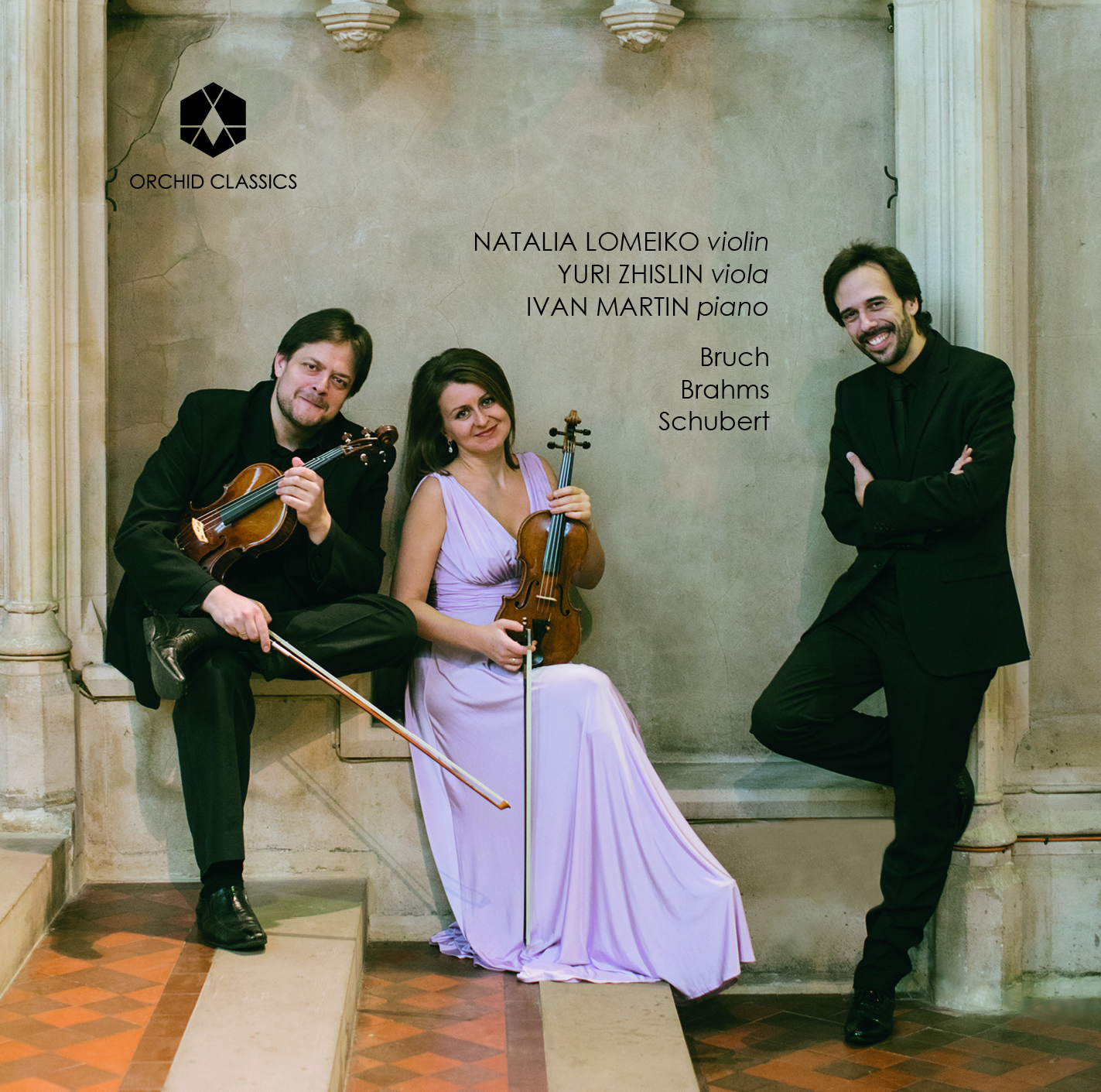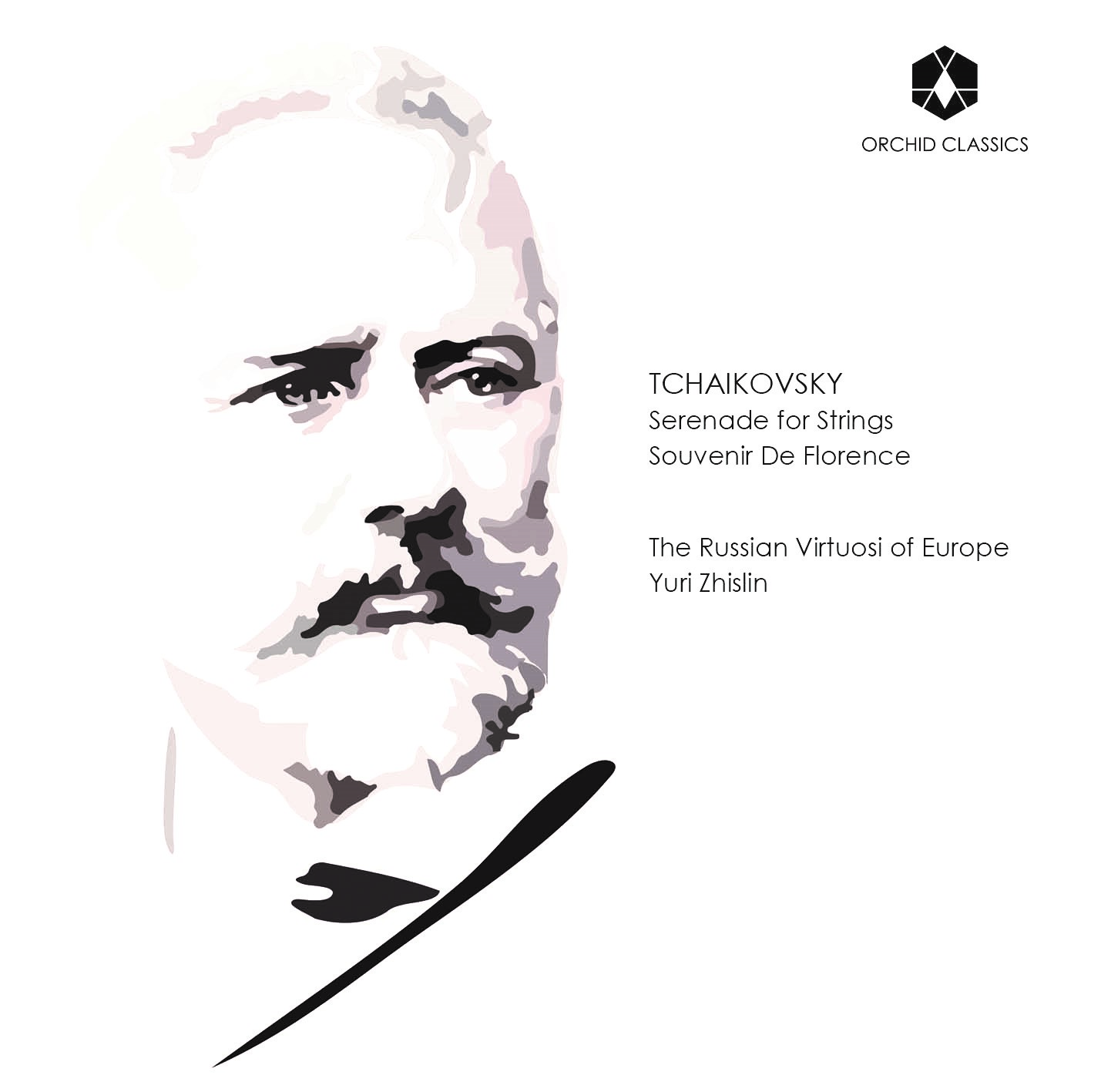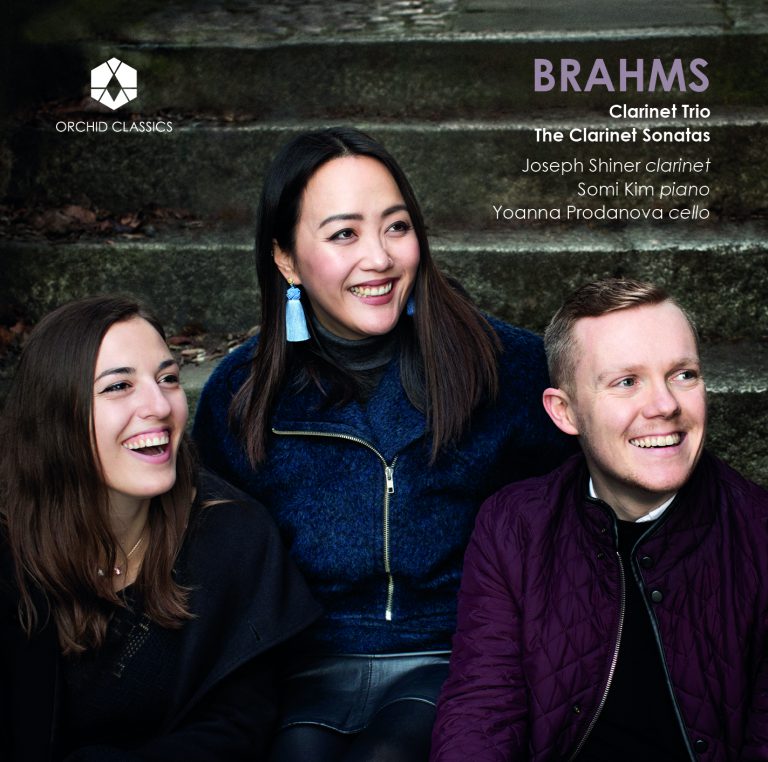Artist Led, Creatively Driven

Bruch, Brahms, Schubert
Natalia Lomeiko, violin
Yuri Zhislin, viola
Ivan Martin, piano
Release Date: 19th July 2019
ORC100098
Johannes Brahms (1833-1897)
Trio in E flat major, Op.40
1 Andante 7.37
2 Scherzo – Allegro 7.09
3 Adagio mesto 7.21
4 Finale – Allegro con brio 6.24
Max Bruch (1838-1920)
Eight pieces (Acht Stucke), Op. 83
5 I. Andante 4.40
6 II. Allegro con moto 2.39
7 III. Andante con moto 6.06
8 IV. Allegro agitato 3.28
9 V. Rumanische Melodie – Andante 4.54
10 VI. Nachtgesang – Andante con moto 6.28
11 VII. Allegro vivace, ma non troppo 3.33
12 VIII. Moderato 5.06
13 Franz Schubert (1797-1828)
Nocturne in E flat major, Op.148, D.8979.59
Total time75.42
Natalia Lomeiko, violin
Yuri Zhislin, viola
Ivan Martin, piano
Johannes Brahms wrote his Trio in E flat, Op.40, in 1865 with a very specific instrument in mind, and although we hear the work in its version for violin, viola and piano, our understanding of the music stems from its original conception. Brahms grew up hearing his father playing the Waldhorn, meaning forest, or hunting, horn. This was an open, valveless horn which had also been used by Beethoven, Haydn and Mozart, and which Brahms himself played under his father’s supervision.
Although chromatic French horns would have been available, Brahms requested the Waldhorn for his Trio, which explains the fact that every movement is in the instrument’s native key of E flat. This is one of the last of Brahms’s early chamber works, in which he seems to recollect the joys of youth, although its quality also signifies his early maturity. His choice of his father’s instrument, rather than the modern equivalent, is a telling indication of the nostalgic atmosphere which pervades the work.
Each of the four movements is linked thematically. The opening movement is unusual in Brahms’s output: virtually every one of his major works opens with a movement in sonata form, except this one, which is a rondo. Brahms alternates a nostalgic theme with quick-moving, longing music. At times the texture evokes that of Brahms’s piano concertos (the first of which dates from 1858), and the instruments combine to create an almost orchestral sonority. The Scherzo’s form is also unusual (a kind of truncated sonata form), and musically this movement takes the form of a hunting song full of boisterous energy, tempered by the Trio, which is a Ländler, a type of Austrian folk dance.
The Adagio third movement is a lament in 6/8 time which quotes a folk song taught to Brahms by his mother, Dort in den Weiden steht ein Haus (‘There in the Willows Stands a House’). This adds to the work’s wistful quality, and it seems likely that this mournful movement was one of several requiems composed for his mother, Christiane Brahms, who had died earlier in 1865. The minor key and chromaticism of the motifs would require stopped notes from the Waldhorn, which would consequently have sounded ‘veiled’, a timbre emulated by the violin in this arrangement. In the ebullient finale, which again evokes the hunt, sparkling piano-writing and quick-fire exchanges between the instruments return the work to its celebration of youthful exuberance. The work later inspired a tribute from György Ligeti in the form of his Horn Trio of 1982.
Max Bruch was an exact contemporary of Brahms and existed in his shadow; this, and his reluctance to embrace the innovations pioneered by Wagner, rather stifled his career. Bruch’s status rests largely on a ‘one-hit wonder’, his Violin Concerto No.1 and, to a lesser extent, the Scottish Fantasy, and while the fame of these works is understandable, the neglect of much of the rest of his output seems unjust when there is much to recommend it.
Bruch’s Eight Pieces, Op.83, were written for the mellow timbres of viola, clarinet and piano. We hear the version for violin, viola and piano, a combination which sheds new light on the original material. Bruch felt a particular affinity for the violin, arguing that it “can sing a melody better than a piano, and melody is the soul of music”, and he was friends with a number of virtuoso violinists, including Joseph Joachim, Pablo Sarasate, Ferdinand David and Willy Hess, musicians who advised him during the composition of nine major works for violin and orchestra. Bruch composed this chamber work when he was 70; his age and the fact that his own brand of Romanticism was being surpassed by more forward-looking techniques must have influenced the nostalgic tone of the pieces. They are character pieces in nature, although there are no descriptive titles. All but one, the seventh, is in a minor key, accentuating the overriding sense of introspection. The pieces were published in Berlin in 1910.
The set opens with an Andante in which the piano is a constant presence, whereas the violin and viola alternate and rarely overlap, passing between them a melody reminiscent of Schumann. The second piece, with its ominous, simmering piano writing, is more in keeping with late Brahms, and the third is the most expansive of the set, with both violin and viola enjoying extended melodies. The violin is outgoing and spontaneous, the viola more reticent and lyrical, and the piece culminates in all three instruments coming together during the final section. No.4, marked Allegro agitato, brings respite in the form of some genial exchanges, and the fifth piece draws upon Romanian folk music, the viola’s melody answered by a soulful theme played by the violin with contrapuntal decoration from the viola. Bruch returns to the soundworld of late Brahms in the nocturnal sixth piece, in which the three instruments are more intimately woven together than before, whereas Mendelssohn’s Italianate style seems to infuse the sunnier seventh, the only major-key piece in the set. The muted tone of the opening returns for the final piece; its latent passion is never quite allowed to blossom fully, but is governed by a restraint that leads, inevitably, to silence.
Franz Schubert was both exceptionally prolific and astonishingly consistent in the quality of his output, one consequence of which was that he wrote a number of partially-completed works of such beauty that they are regularly performed as stand-alone pieces. These include the ‘Unfinished’ Symphony No.8, D.759, the Quartettsatz (“quartet movement”, D.703) and this single movement for piano trio, known as the Notturno, a title coined by its first publisher rather than by Schubert himself.
The movement, originally for violin, cello and piano, may at first have been intended for Schubert’s Piano Trio No.1, D.898, written during 1827 and completed in 1828 – the last year of Schubert’s life. The Notturno was finished in the autumn of 1827, so the timing is right, although it seems scarcely plausible that Schubert would reject the movement for use in a large-scale work. Indeed, the Notturnoseems to foreshadow the Adagio of Schubert’s last chamber work, the String Quintet in C major, D.956.
The “nocturnal” nature of this movement stems from its hushed, long-breathed melody, which reveals itself slowly in close harmony between violin and viola, punctuated by the harp-like piano part. The roles are then reversed, the piano taking up the melody while the strings play pizzicato.
The central section features one of Schubert’s characteristically deft key-changes, in this case from E-flat major to the bright key of E major, just a semitone apart. The central section is briefly alluded to again in the coda, and the piece draws to a close in an exquisitely carefree mood, the piano’s trilling motif recalling a similar gesture used in the earlier ‘Trout’ Quintet.
© Joanna Wyld, 2019
Natalia Lomeiko, violin
Born into a family of musicians in Novosibirsk, Russia, Natalia has established herself internationally as a versatile performing artist.
Since her debut with the Novosibirsk Philharmonic Orchestra at the age of seven, Natalia has performed as a soloist with many orchestras, such as the Royal Philharmonic Orchestra under the baton of Lord Menuhin, Philharmonia, Singapore Symphony, New Zealand Symphony, Auckland Philharmonia, Christchurch Symphony, Tokyo Royal Philharmonic, Moscow State Chamber Orchestra, Melbourne Symphony, Adelaide Symphony, St. Petersburg Radio Symphony, Nice Philharmonic, Russian State Philharmonic Orchestra among many others.
Natalia has collaborated with such distinguished conductors as Lionel Bringuier, Matthias Bamert, Arvo Volmer, Olari Elts, Vladimir Verbitsky, Miguel Harth-Bedoya, Eckehard Stier, Mikhail Gerts, Valery Poliansky, Pavel Kogan, Yuri Simonov, Vladimir Ashkenazy and many others.
Following her wins at “Premio Paganini”and Michael Hill International Violin Competitions, Natalia recorded with pianist Olga Sitkovetsky for Dynamic, Fone, Trust Records, Atoll and with violinist/violist Yuri Zhislin for Naxos.
Natalia has performed extensively as a soloist and chamber musician in such prestigious venues as the Carnegie Hall, Wigmore Hall, Kings Place, the Queen Elizabeth Hall, Buckingham Palace, the Barbican and the Royal Festival Hall. She has performed chamber music with such distinguished musicians as Maxim Vengerov, Gidon Kremer, Yuri Bashmet, the late Boris Pergamenschikov, Tabea Zimmerman, Dmitry Sitkovetsky, Schlomo Mintz, Daishin Kashimoto, Natalie Clein, Nicholas Daniel, Vadim Repin, Claudio Bohorquez and many others.
Natalia was appointed a Professor of Violin at the Royal College of Music in London in 2010 and currently resides in London.
Yuri Zhislin, viola
Described by The Strad magazine as a “virtuoso with a truly romantic temperament”, violinist and violist Yuri Zhislin became the BBC Radio Two Young Musician in 1993. He studied at the Gnessin Music School in Moscow and later at the Royal College of Music in London.
Yuri has appeared as a soloist with major orchestras around the world and performed in his native Russia, Europe, the United States, South America, Far East, Australia and New Zealand.
A keen chamber musician, Zhislin has worked alongside Maria-Joao Pires, Maxim Vengerov, Sergei Nakariakov and Natalie Clein among many others. His debut recital CD in 2005 for SOMM Recordings received rave reviews. In 2004, Zhislin formed The Russian Virtuosi of Europe chamber orchestra (currently Camerata Tchaikovsky). They have enjoyed a series of critically acclaimed tours in Russia, Europe and South America and have been regular visitors of London’s Kings Place since 2011. Their CD for Orchid Classics was the “BBC Music Magazine orchestral CD of the month” in April 2016. Yuri is a professor of violin and viola at the Royal College of Music and is in high demand as a visiting professor across Europe.
Ivan Martin, piano
Recognized by critics and audiences as one of the most brilliant and engaging musicians of his generation, Ivan Martin collaborates regularly with most spanish orchestras as well as London Philharmonic Orchestra, Konzerthausorchester Berlin, Orchestre de Paris, Strasbourg Philharmonic Orchestra, Helsinki Philharmonic, Polish Chamber Orchestra, Sinfonia Varsovia, Monterey Symphony, Sao Paulo Symphony, Montevideo Philharmonic and Santiago de Chile Symphony, with conductors such as Gerd Albrecht, Christoph Eschenbach, Elias Grandy, Andrew Gurlay, Günter Herbig, Lü Jia, Vladimir Jurowsky, Jean Jacques Kantorow, Kirill Karabits, Adrian Leaper, Juanjo Mena, John Neschling, Christophe Rousset, Michael Schønwandt, Dima Slobodeniouk, Krzysztof Urbański or Antoni Wit. He has been invited to perform in “New York International Keyboard Festival”, “Orford International Music Festival” (Canada), “Festival International La Roque d’Anthéron” (France), “Festival International La Folle Journée” (France), “Festival Internacional de Grandes Pianistas” (Chile), “Festival Internacional Cervantino” (Mexico), “International Music Festival Macao”(China), visiting the most prestigious concert halls around the World, such as Berliner Konzerthaus, Berliner Staatsoper, Berliner Philharmonie, Dortmund Konzerthaus, Amsterdam Concertgebouw, Salle Pleyel (Paris), New York Carnegie Hall or Beijing National Center for Performing Arts.
He has recorded numerous programmes for radio and television in Spain, France, Italy, Brasil and the USA, and his recordings have been warmly welcomed by audiences and critics, receiving rave reviews and several awards. Ivan Martin has been artist in residence of Gran Canaria Philharmonic Orchestra and Miguel Delibes Cultural Centre in Valladolid and, from season 2019/2020, he has been appointed chief conductor of Burgos Symphony Orchestra (Spain).








